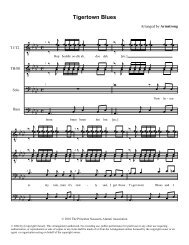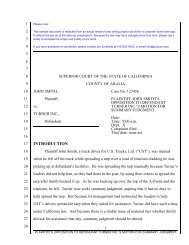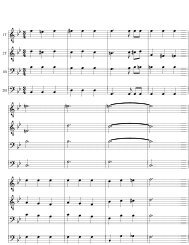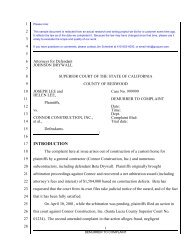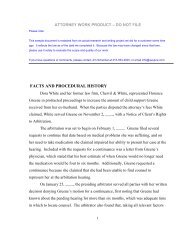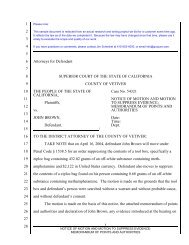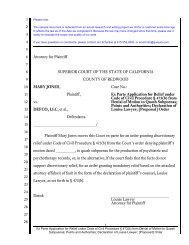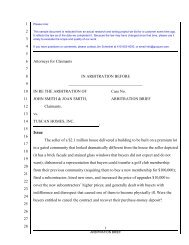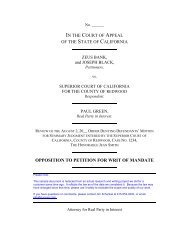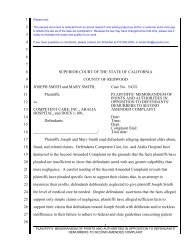Motion to disclose confidential informant - Quo Jure Corporation
Motion to disclose confidential informant - Quo Jure Corporation
Motion to disclose confidential informant - Quo Jure Corporation
Create successful ePaper yourself
Turn your PDF publications into a flip-book with our unique Google optimized e-Paper software.
1<br />
2<br />
3<br />
4<br />
5<br />
6<br />
7<br />
8<br />
9<br />
10<br />
11<br />
12<br />
13<br />
14<br />
15<br />
16<br />
17<br />
18<br />
19<br />
20<br />
21<br />
22<br />
23<br />
24<br />
25<br />
26<br />
27<br />
28<br />
ARGUMENT<br />
The court will compel disclosure of a <strong>confidential</strong> <strong>informant</strong> when the defendant<br />
makes an adequate showing that the <strong>informant</strong> may be a material witness on the issue of<br />
guilt or innocence. People v. Theodor (1972) 8 Cal.3d 77, 88. He must show a<br />
reasonable possibility that, in view of the evidence, the <strong>informant</strong> could give evidence on<br />
the issue of guilt that might result in exoneration. Ibid. He need not prove that the<br />
<strong>informant</strong> would give that testimony, but only show some evidence of a possibility that<br />
the unnamed informer is a material witness. Ibid.<br />
The defendant must demonstrate the witness’s—not the testimony’s—material<br />
character. People v. Mejia (1976) 57 Cal.App.3d 574, 580. An <strong>informant</strong> who is an<br />
actual participant in the crime alleged or a nonparticipating eyewitness <strong>to</strong> it is ipso fac<strong>to</strong> a<br />
material witness. People v. Lee (1985) 164 Cal.App.3d 830, 835-836. Such a witness<br />
has a sufficiently proximate vantage point <strong>to</strong> the crime that his testimony’s material<br />
character will be presumed. People v. White (1974) 38 Cal.App.3d 412, 423-424.<br />
If defendant were charged only with the possession of drugs for sale and the<br />
evidence against him consisted of mere indicia of intent <strong>to</strong> sell (such as the amount of<br />
contraband possessed and the simultaneous possession of scales, no disclosure of a<br />
<strong>confidential</strong> <strong>informant</strong> would be necessary. People v. Alderrou (1987) 191 Cal.App.3d<br />
1074, 1081. In Alderrou, the <strong>informant</strong> could not give exculpa<strong>to</strong>ry testimony regarding a<br />
sale because the defendant there<br />
was not convicted of selling methamphetamine or transporting it or giving it<br />
away. [Alderrou] was not being charged nor was he convicted of the<br />
particular sale—or any sale—which he may have made <strong>to</strong> the <strong>confidential</strong><br />
<strong>informant</strong> or which the <strong>confidential</strong> <strong>informant</strong> may have witnessed. Instead,<br />
the crime for which he was charged and convicted was the possession of<br />
methamphetamine which had not yet been sold <strong>to</strong> anyone but was intended <strong>to</strong><br />
be sold by someone at some time <strong>to</strong> someone else.<br />
4<br />
NOTICE OF MOTION AND MOTION TO DISCLOSE CONFIDENTIAL INFORMANT




